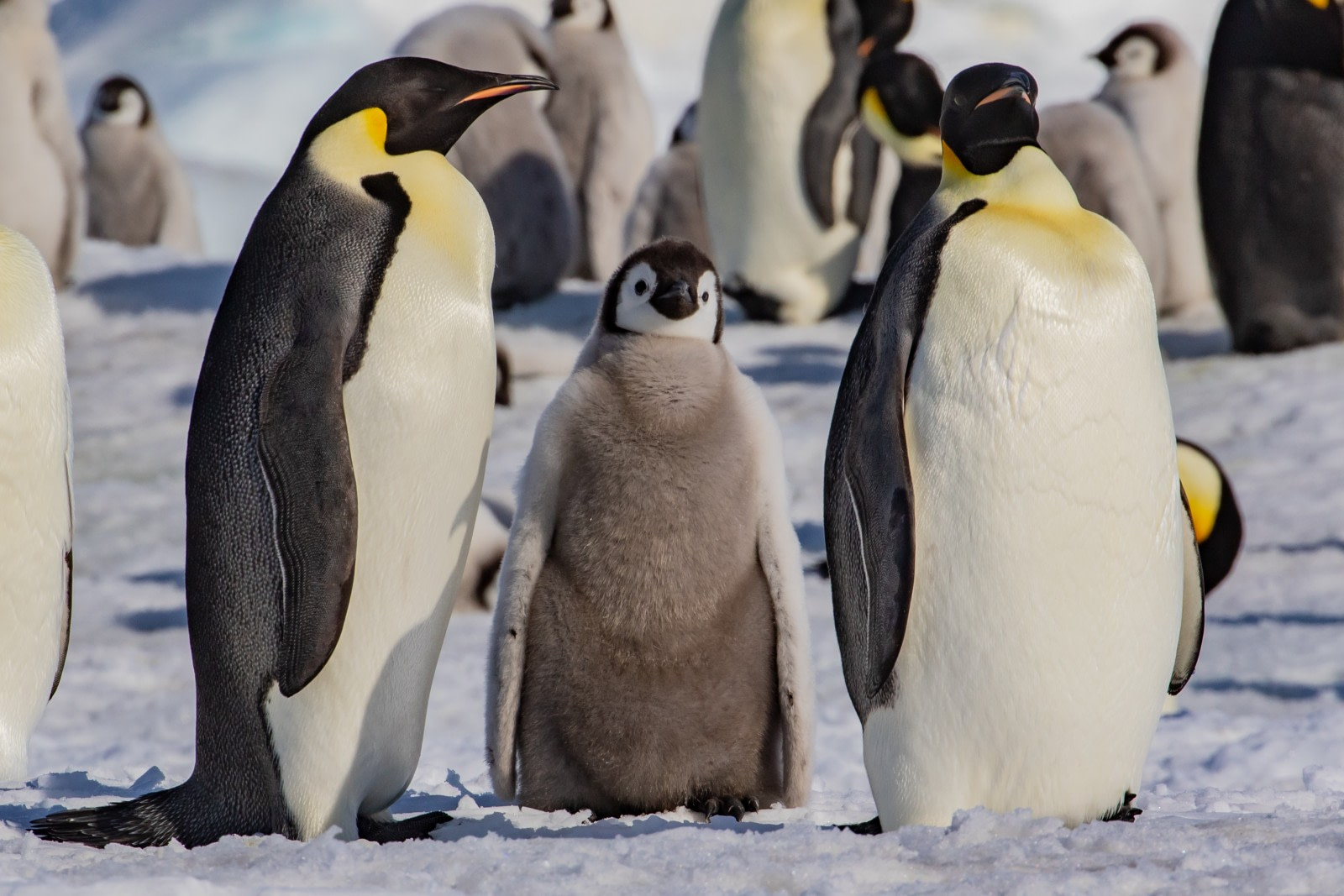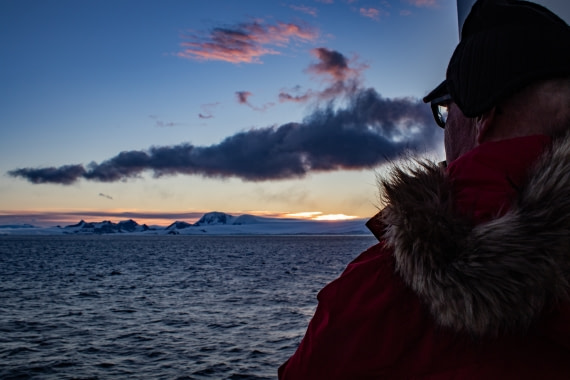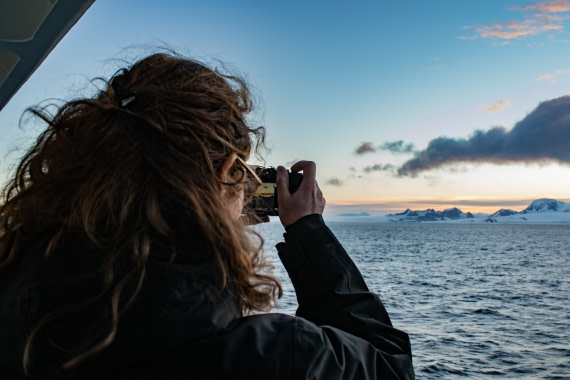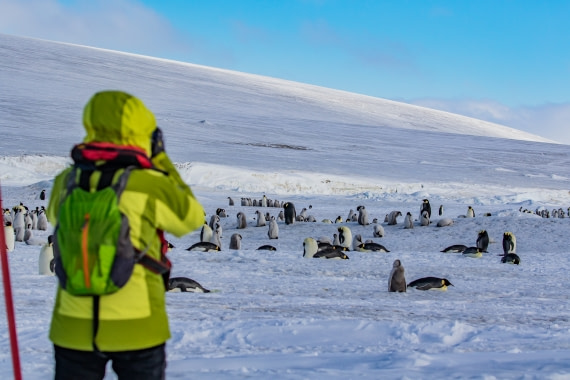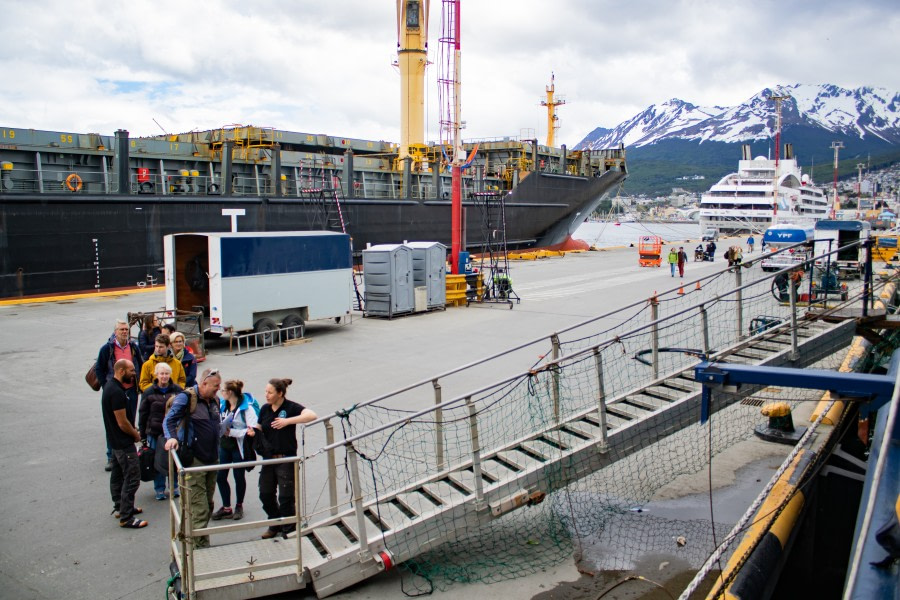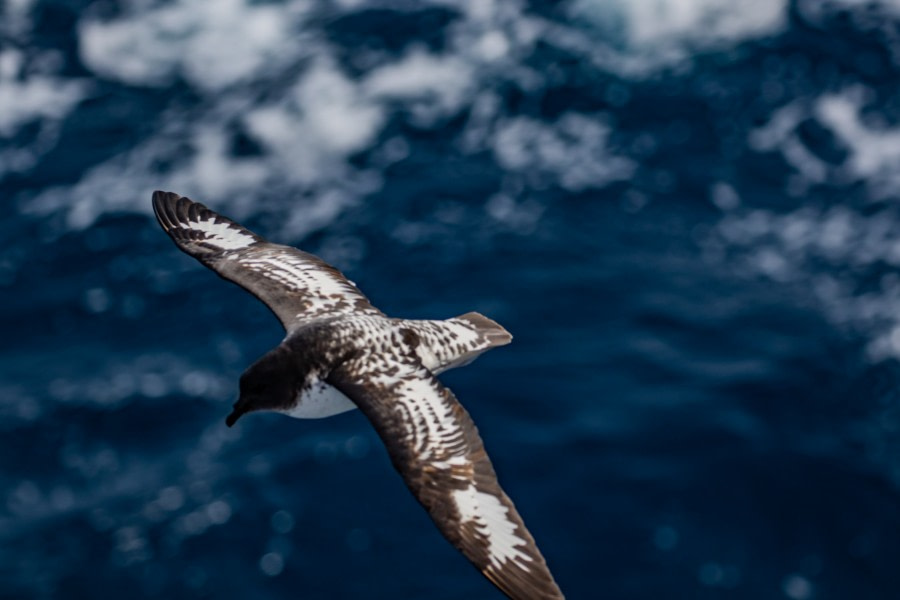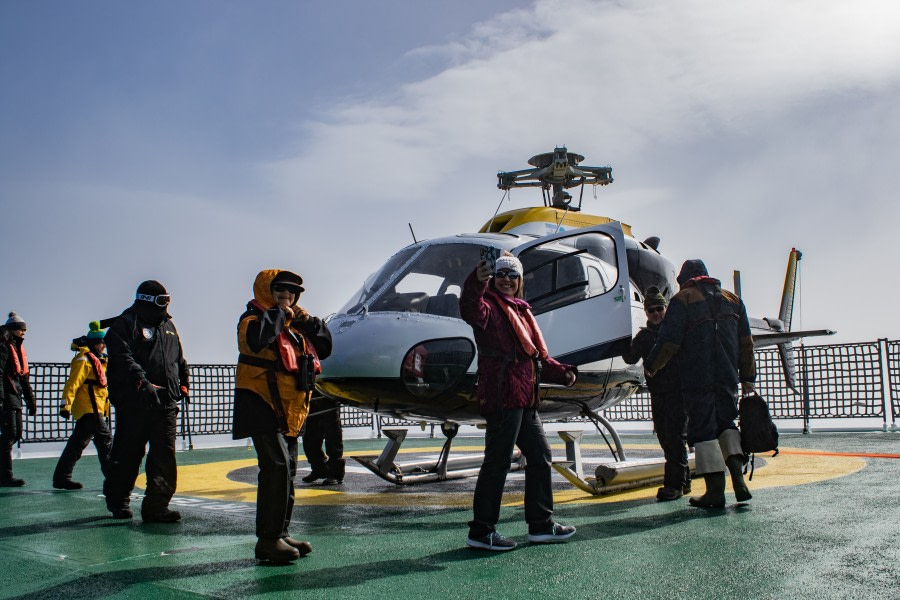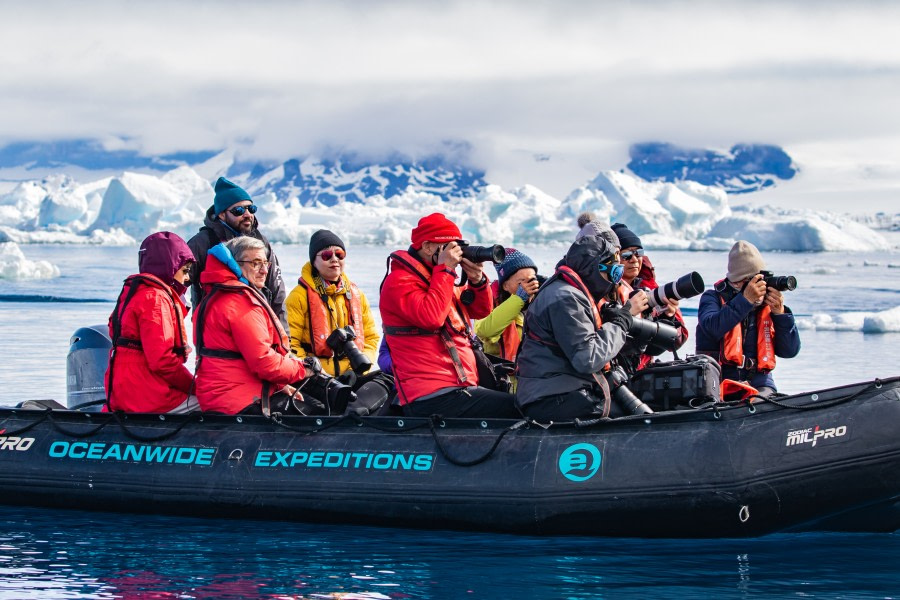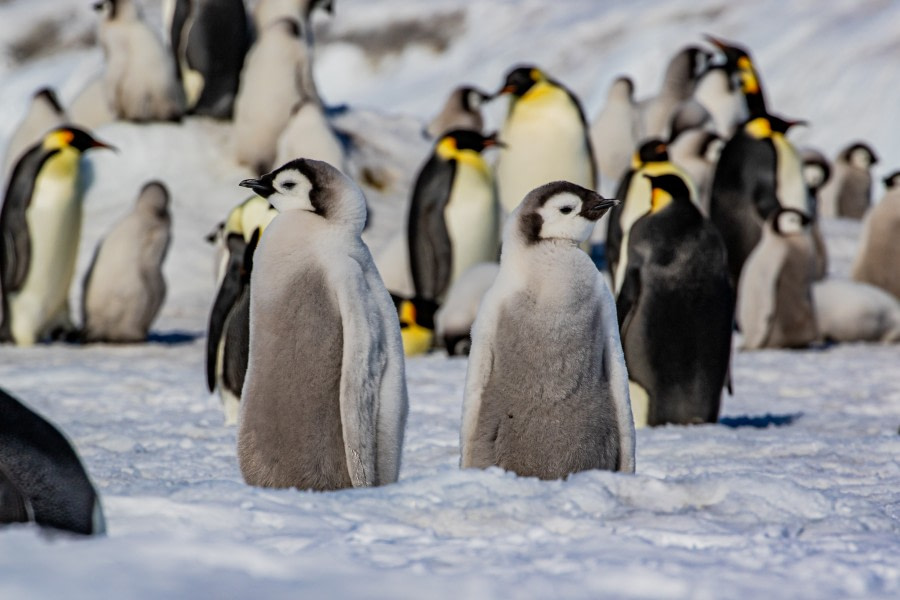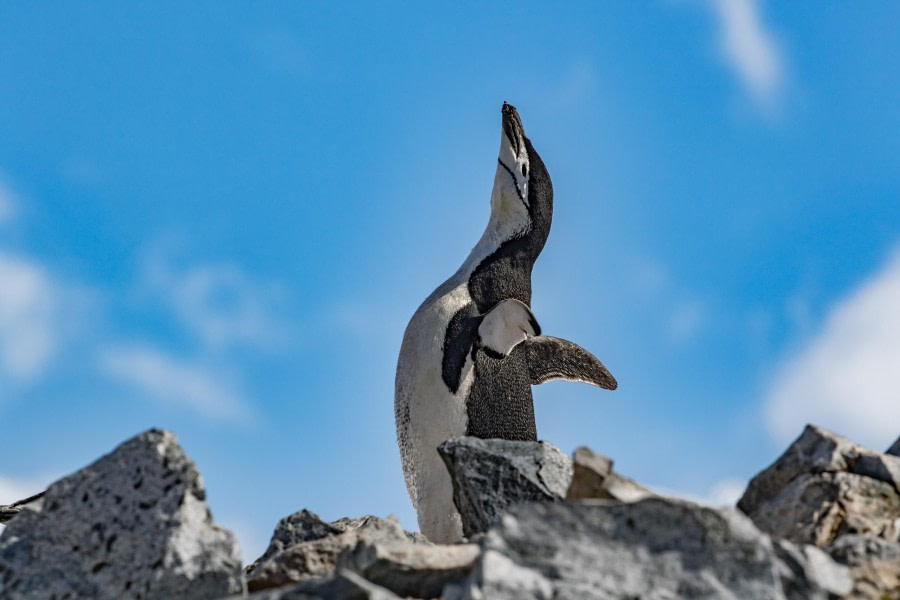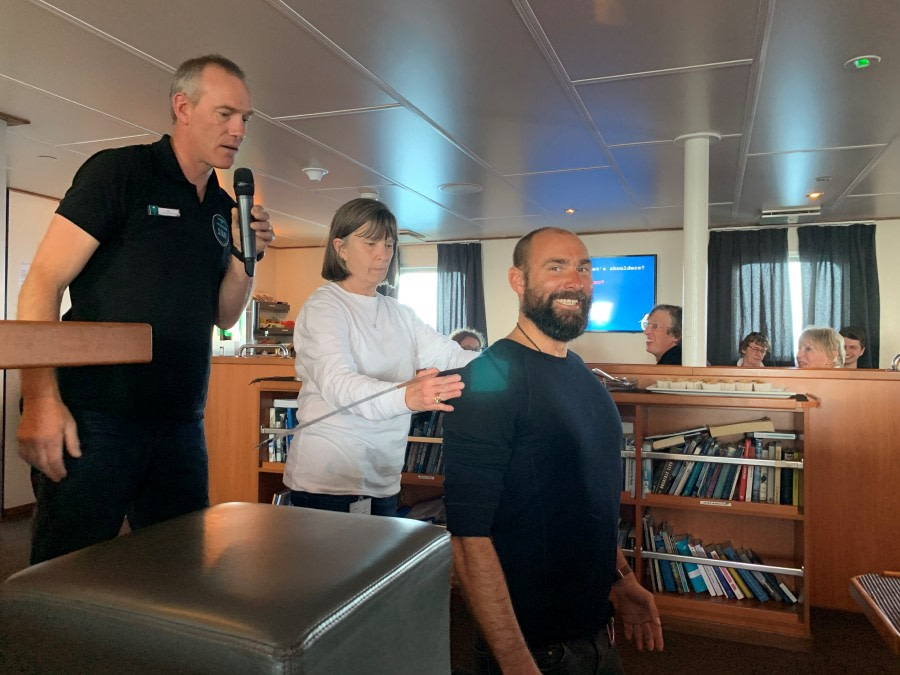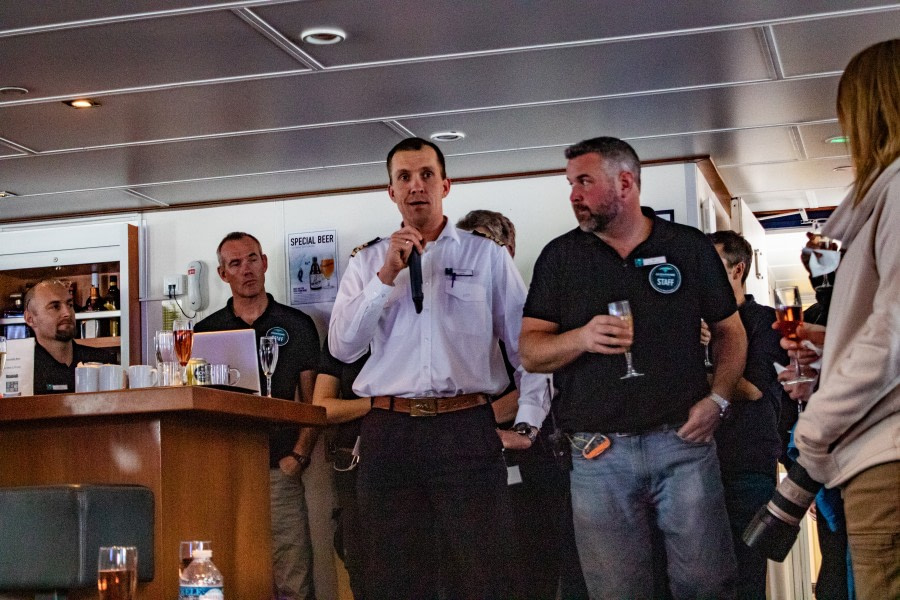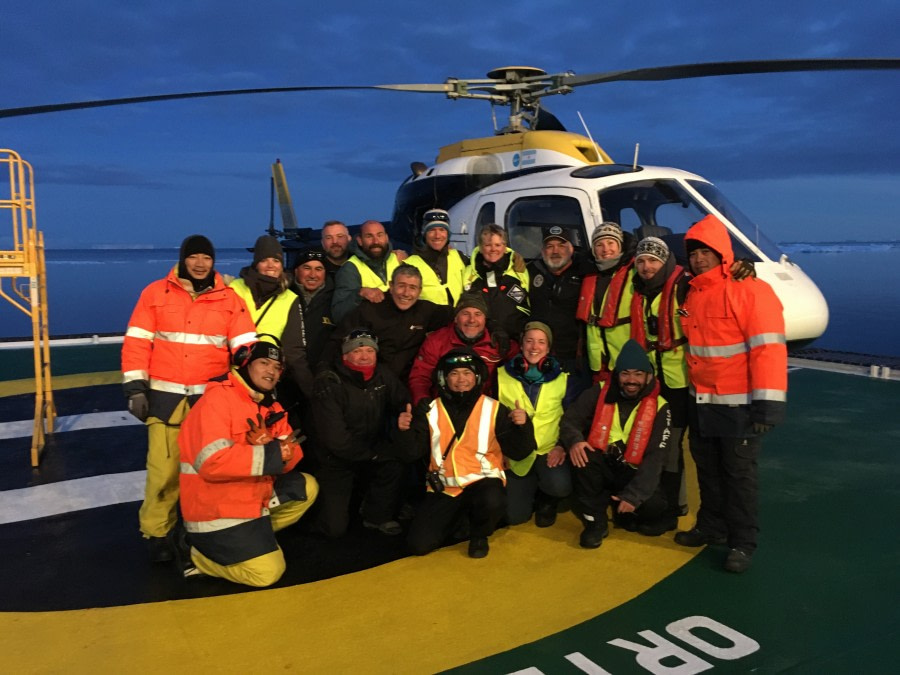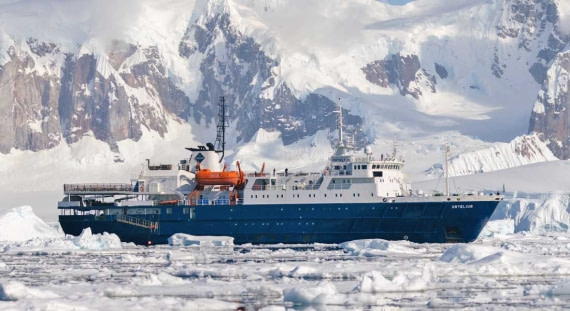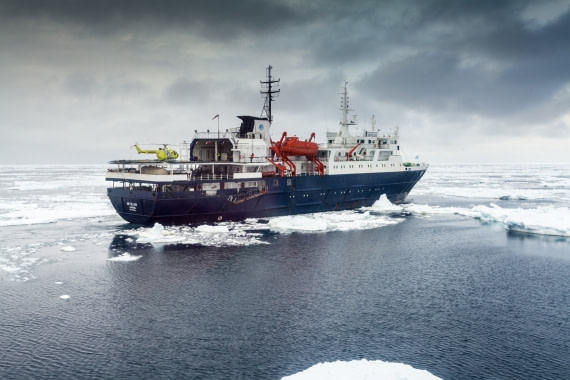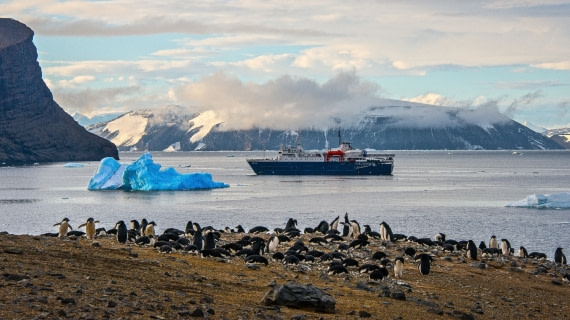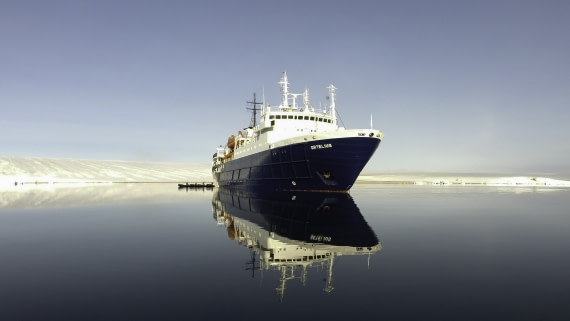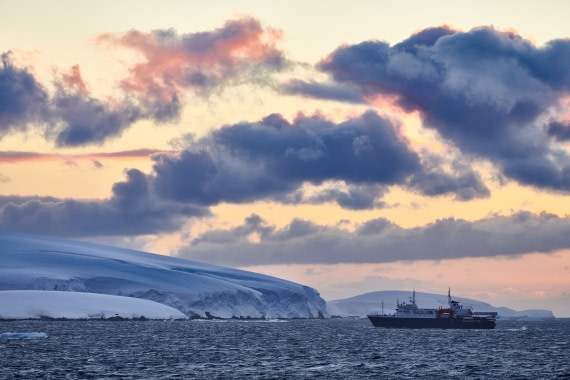| Fecha: |
18.11.2019 |
| Posición: |
63°22'9 S 56°55'9 O |
| Viento: |
SW F3-F8 |
| Temperatura del Aire: |
-2 |
Durante la noche conseguimos entrar en el Estrecho Antártico, acercándonos desde el Sur. Nuestro capitán y EL habían tomado la decisión de navegar hacia el norte con la esperanza de poder realizar algún tipo de actividad hoy. Esto fue en lugar de esperar en la isla Snow Hill, una zona donde el tiempo se deterioró rápidamente la tarde anterior y no mostraba signos de mejora para las próximas 24 horas en el pronóstico del tiempo.
El Antarctic Sound, es una masa de agua de unos 30 nm de largo y alrededor de 7-12 nm de ancho, que separa el grupo de islas Joinville del extremo noreste de la Península Antártica. El estrecho fue bautizado por la Expedición Antártica Sueca al mando de Otto Nordenskjöld por el buque de expedición Antarctic en el que en 1902, al mando de Carl Larsen fue el primer buque en navegarlo. La zona es bien conocida por acumular hielo compacto y grandes icebergs tabulares, sin embargo, nuestro tránsito no se vio obstaculizado por estos importantes obstáculos. Nuestro plan para el día era visitar Hope Bay por la mañana. Las condiciones para el desembarco no eran las ideales, ya que el viento soplaba con fuerza 5-8 en la escala de Beaufort durante la mañana, lo que hacía imposible cualquier plan de utilizar nuestras zodiacs. Por ello, nuestro jefe de expedición y el capitán decidieron que haríamos un crucero por el interior de Hope Bay, con el objetivo de echar un vistazo a la estación científica construida allí, al paisaje y a la posible vida salvaje.
Al entrar en Bahía Esperanza temprano por la mañana, tuvimos la vista de un gran conjunto de edificios de color rojo anaranjado que conforman la "Estación Científica Esperanza", construida por el gobierno argentino a principios de los años 50, la estación alberga 55 habitantes con sus familias y niños. La estación tiene unos 43 edificios y ocupa un espacio de unos 3800 metros cuadrados. Entre los edificios hay una escuela para los niños que vienen con las familias. Aquí se investiga en distintos campos de la ciencia, como glaciología, sismología, oceanografía, biología y limnología. La base es el lugar donde nació el primer ser humano en la Antártida, el Sr. Emilio Marcos Palma. La estación está gestionada por el Instituto Antártico Argentino.
Tras pasar por la estación, pudimos ver una gran colonia de pingüinos Adèlie que anidaban por miles. A medida que nos adentrábamos en la bahía, pudimos identificar un alto pico que flanqueaba la Estación Esperanza llamado Monte Flora (1705 metros de altura) a babor proa, el Glaciar Depot a proa del barco, el Pico Whitten (1462 metros de altura) a estribor proa y el Glaciar Arena, a estribor. La sensación térmica era bastante fuerte en las cubiertas de nuestro barco, pero a pesar de ello muchos valientes pasajeros se dedicaron a hacer fotos del fantástico paisaje que teníamos ante nosotros. Cuando el barco viró para salir de la bahía, tuvimos la oportunidad de ver una manada de Orcas de tipo B nadando alrededor del barco. Pippa, nuestra bióloga marina a bordo, las identificó tras una cuidadosa inspección de sus fotos. Antes de la hora del almuerzo, nos dirigimos hacia Brown Bluff, un lugar muy pintoresco situado a 9 millas al sur de Hope Bay. Brown Bluff es una montaña plana cubierta de hielo de 745 metros de altura con un prominente acantilado de roca volcánica de color marrón rojizo en el lado norte de la península de Tabarin. El nombre le fue dado por el Falkland Islands Dependencies Survey realizado entre 1943 y 1962. La zona es importante porque alberga muchas especies reproductoras, como el Pingüino de Adelia, el Petrel del Cabo, el Pingüino cocinera, las Gaviota cocineras, los Skuas, los Petreles nivales, las Focas de Wedell, las Focas leopardo y los Petreles níveos.
Llegamos después de comer y, lamentablemente, la zona de desembarco estaba completamente cubierta de hielo, por lo que el desembarco era prácticamente imposible y peligroso. Un crucero en zodiac era la única manera segura de disfrutar de este lugar, la decisión valió la pena, ya que tan pronto como nuestro crucero comenzó, pudimos ver muchos pingüinos Adelia nadando alrededor del hielo o posados en la parte superior de los icebergs. Más tarde pudimos observar una Foca cangrejera, una Foca leopardo y una Foca de Weddell muy solitaria, todas ellas descansando sobre icebergs, bajo un cielo soleado.
En el tiempo que pasamos navegando, también pudimos ver muchas aves de la zona: el Skua antártico, un par de Petrel níveos, Gaviota cocineras y un Petrel níveo. Una de las vistas más emocionantes desde un par de zodiacs fue un Paíño de Wilsones, que voló alrededor de algunas zodiacs mostrando su característico plumaje negro y sus grandes habilidades de vuelo.
